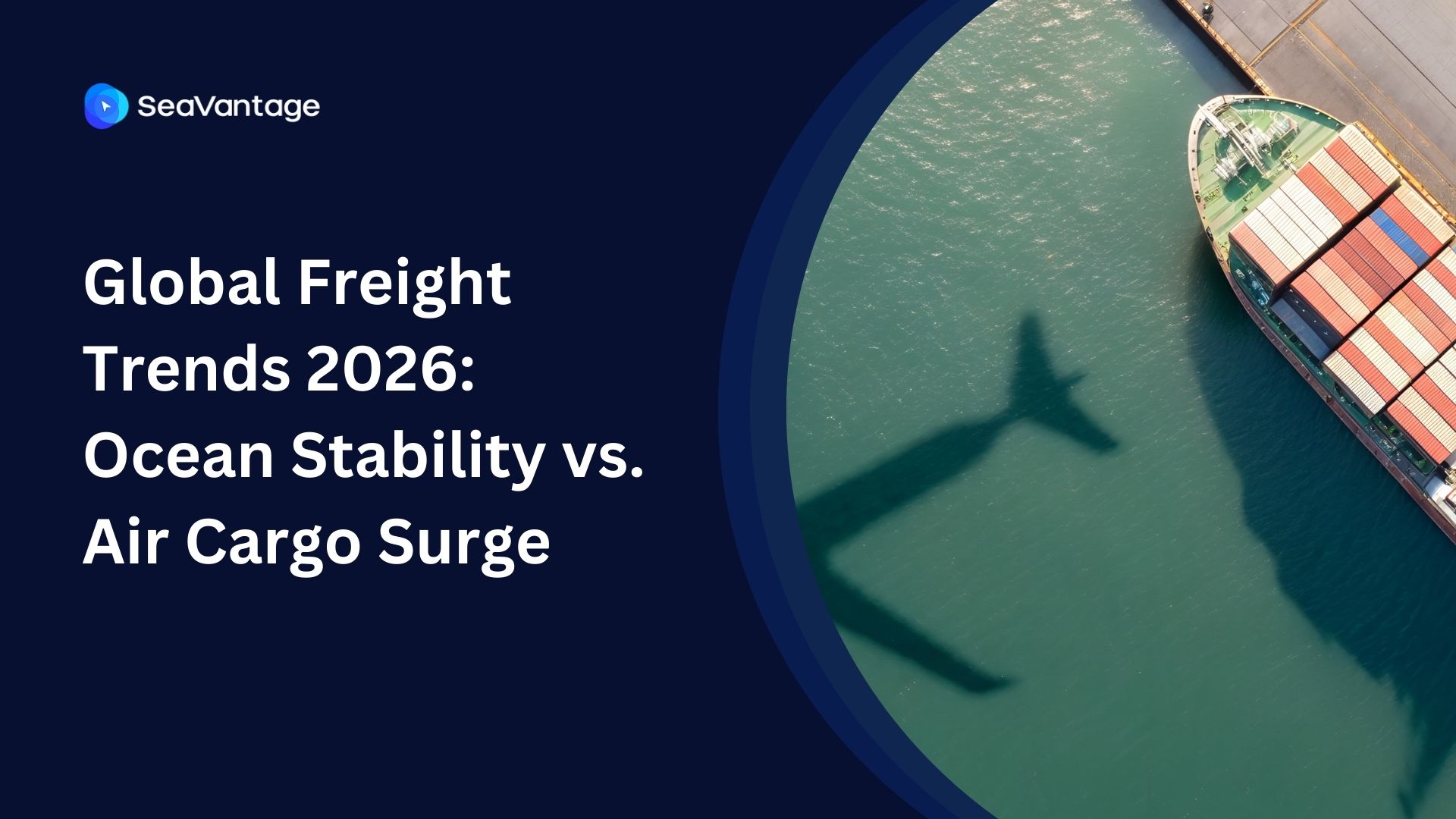A Comprehensive Guide to Understanding Container Shipping
Introduction
Container shipping is a cornerstone of global trade, enabling the efficient movement of goods across the world's oceans. Container ships, with their standardized containers, have revolutionized the logistics industry since their introduction in the mid-20th century, streamlining the process of loading, transporting, and unloading goods. Today, they are responsible for transporting approximately 90% of the world's non-bulk cargo, underscoring their critical role in global commerce.
Types of Container Ships
Container ships vary in size and capacity to meet the demands of different shipping routes and cargo volumes:
- Feeder Ships: Small ships with a capacity of 1,000 to 3,000 TEUs (Twenty-Foot Equivalent Units), typically used for regional and short-distance routes. Example: The vessel "Seaspan Dalian," with a capacity of about 2,500 TEUs, operates primarily on intra-Asian routes.
- Panamax Ships: Designed to fit through the Panama Canal, with capacities of up to 5,000 TEUs. Example: The "Maersk Seletar" is a Panamax container ship with a capacity of approximately 4,500 TEUs.
- Post-Panamax Ships: Larger than Panamax ships, with capacities ranging from 5,000 to 13,000 TEUs. Example: The "Ever Lasting," with a capacity of 8,000 TEUs, is a typical Post-Panamax ship.
- Ultra Large Container Vessels (ULCVs): The giants of the seas, with capacities exceeding 20,000 TEUs, used on major global trade routes. Example: The "MSC Gülsün," one of the largest container ships in the world, has a capacity of over 23,000 TEUs.
Structure of a Container Ship
Container ships are designed with several key features to accommodate their cargo:
- Hull: The main body of the ship, providing buoyancy and structural integrity. Modern hull designs are optimized for fuel efficiency and stability.
- Deck: The flat surface on top of the hull where containers are stacked. On the "MSC Gülsün," containers are stacked up to 11 levels high on the deck.
- Cargo Holds: Internal compartments below the deck where containers are stored. These are divided into cells that hold containers securely.
- Cell Guides: Vertical rails within the cargo holds that guide containers into place, ensuring they are properly aligned and secured.
- Twist Locks: Mechanisms that secure containers to each other and the ship, preventing movement during transit. These are crucial for maintaining the stability of the container stack during rough seas.
The Container Shipping Process
The process of shipping containers involves several key steps:
- Booking: Shippers book space on a container ship through a shipping company, specifying the cargo, destination, and other details. For instance, a company shipping electronics from Shenzhen to Rotterdam would book space on a relevant vessel.
- Loading: At the port of origin, containers are loaded onto the ship using large cranes. Each container is carefully placed according to a stowage plan to ensure balance and maximize space. The Port of Shanghai, the busiest container port in the world, exemplifies efficient loading operations.
- Transport: The ship navigates its planned route to the destination port, often stopping at multiple ports along the way. For example, the Asia-Europe route may include stops in Singapore, Dubai, and Hamburg.
- Unloading: At the destination port, containers are unloaded using cranes and moved to trucks or trains for further distribution. The Port of Rotterdam is renowned for its rapid and efficient unloading processes.
Cargo Handling
Efficient cargo handling is crucial for the smooth operation of container ships:
- Cranes: Ship-to-shore cranes lift containers on and off the ship, while gantry cranes move containers within the port. The Port of Los Angeles uses some of the world's most advanced cranes, capable of handling multiple containers simultaneously.
- Stowage Planning: Containers are arranged according to a stowage plan that considers weight distribution, destination, and container type. Proper stowage ensures the ship's stability and facilitates quick unloading at each port. For example, perishable goods might be stowed closer to the hatch for faster access upon arrival.
Navigation and Route Planning
Container ships follow meticulously planned routes to ensure timely delivery:
- Route Planning: Shipping routes are chosen based on trade lanes, weather conditions, and port accessibility. Major routes include the Asia-Europe trade lane and the Trans-Pacific route. Maersk Line, the world’s largest container shipping company, uses sophisticated software to optimize its routes for fuel efficiency and time management.
- Crew: The ship's crew is responsible for navigation, maintenance, and safety operations. Advanced navigation systems assist in route planning and monitoring. A typical ULCV like the "HMM Algeciras" employs a crew of about 24, supported by automated systems.
Safety and Security
Safety and security are paramount in container shipping:
- Safety Measures: Ships are equipped with safety equipment, including lifeboats, fire suppression systems, and safety drills. Regular inspections and maintenance ensure the vessel's seaworthiness. For example, the International Safety Management (ISM) Code mandates safety management systems for safe operation.
- Security Protocols: Measures such as surveillance systems, restricted access zones, and anti-piracy tactics protect against theft and unauthorized access. The use of the International Ship and Port Facility Security (ISPS) Code is mandatory for all vessels.
Environmental Impact and Sustainability Efforts
Container ships face significant environmental challenges, but efforts are being made to reduce their impact:
- Emissions: Ships emit greenhouse gases and other pollutants. Regulations such as the International Maritime Organization's (IMO) sulfur cap aim to reduce emissions. Maersk has invested in vessels powered by carbon-neutral methanol to meet stringent environmental regulations.
- Ballast Water Management: Treating ballast water prevents the spread of invasive species. The "Ballast Water Management Convention" ensures ships are fitted with ballast water treatment systems.
- Sustainability Initiatives: Ports and shipping companies are adopting green technologies, such as liquefied natural gas (LNG) as fuel, shore power, and energy-efficient ship designs. The Port of Los Angeles, for instance, has implemented an Alternative Maritime Power (AMP) system, allowing ships to plug into electrical grids and reduce emissions while docked.
Technological Innovations
Advancements in technology are transforming container shipping:
- Autonomous Ships: Future ships may operate with minimal human intervention, using AI and advanced sensors for navigation and operations. The "Yara Birkeland," set to be the world's first fully electric and autonomous container ship, exemplifies this trend.
- Digital Tracking Systems: Real-time tracking and monitoring of containers improve efficiency and security. Companies like MSC use Internet of Things (IoT) technology to provide real-time data on cargo conditions.
- Blockchain Technology: Enhances transparency and security in shipping documentation and transactions. IBM and Maersk's blockchain platform, "TradeLens," facilitates secure and transparent trade data sharing.
Challenges and Future Trends
The container shipping industry faces ongoing challenges and is evolving to meet future demands:
- Congestion: Ports can become congested, causing delays. Improved infrastructure and logistics management are crucial. For example, the Suez Canal blockage in 2021 highlighted the need for better crisis management and alternative routes.
- Trade Disputes: Political and economic factors can impact global trade flows. The US-China trade war affected shipping volumes and routes.
- Future Trends: The industry is moving towards larger ships, increased automation, and greener technologies to enhance efficiency and sustainability. The development of hydrogen-powered ships and the use of AI for predictive maintenance are trends to watch.
Conclusion
Container shipping is a vital component of global trade, ensuring the efficient movement of goods worldwide. The industry's ongoing evolution, driven by technological advancements and sustainability efforts, promises to shape the future of international logistics, making it more efficient, secure, and environmentally friendly. As container ships continue to grow in size and capability, their role in connecting markets and facilitating global commerce will remain indispensable.
This detailed exploration of container shipping provides a comprehensive understanding of the intricate processes, advanced technologies, and future trends that drive this crucial industry.
2025년 9월, 주요 글로벌 항만에서 어떤 운송사가 가장 긴 선박 체류 시간을 기록했는지 확인해보세요. 트렌드를 비교하고, 지연을 파악하며, 전체 항만 데이터를 통해 운송 전략을 최적화할 수 있습니다.
2025년 8월, 주요 글로벌 항만에서 어떤 운송사가 가장 긴 선박 체류 시간을 기록했는지 확인해보세요. 트렌드를 비교하고, 지연을 파악하며, 전체 항만 데이터를 통해 운송 전략을 최적화할 수 있습니다.
2025년 7월, 주요 글로벌 항만에서 어떤 운송사가 가장 긴 선박 체류 시간을 기록했는지 확인해보세요. 트렌드를 비교하고, 지연을 파악하며, 전체 항만 데이터를 통해 운송 전략을 최적화할 수 있습니다.
iscover the 4 critical ocean freight trends for 2026, from the Red Sea reopening and fleet overcapacity to shifting global trade maps. Prepare your supply chain now.
Discover key 2026 freight market trends: Port of Houston expansion, air cargo "super peak," and ocean freight stability. Plan your supply chain with SeaVantage.
Explore November 2025 global port dwell time data. See which ports and carriers led in efficiency across Antwerp, Busan, Long Beach, Rotterdam, and Singapore.



.svg)





.jpg)

.png)